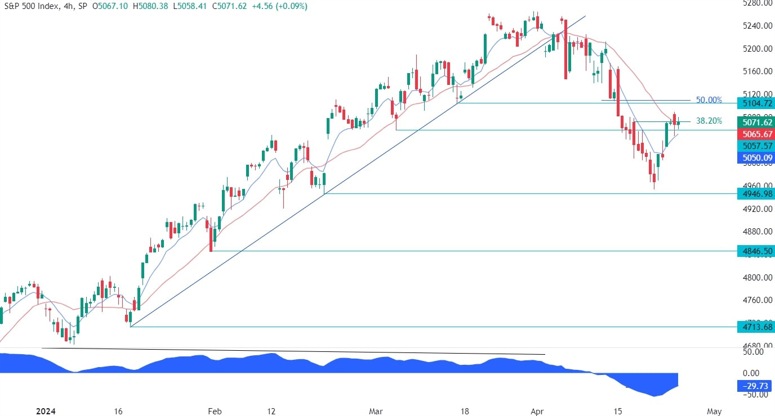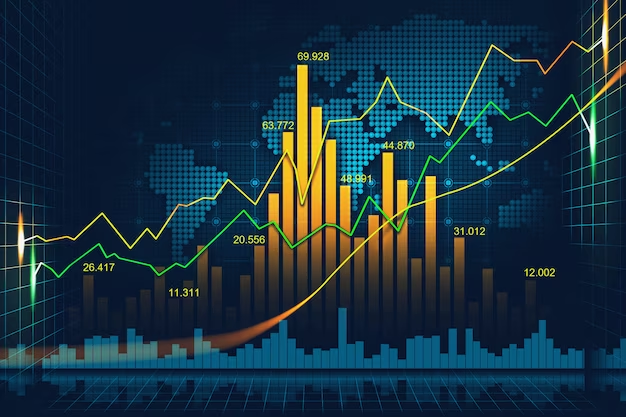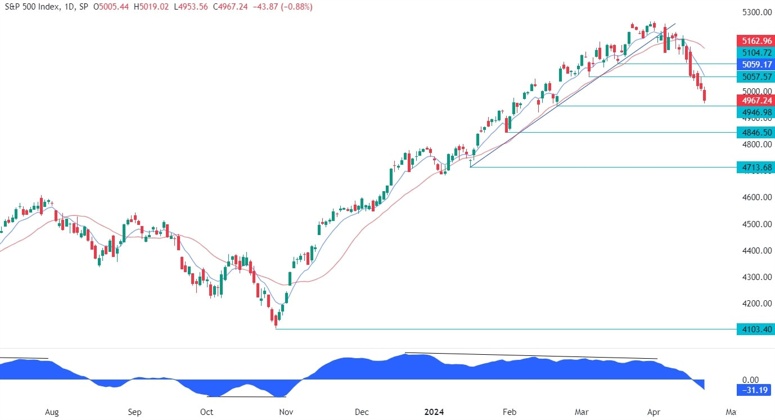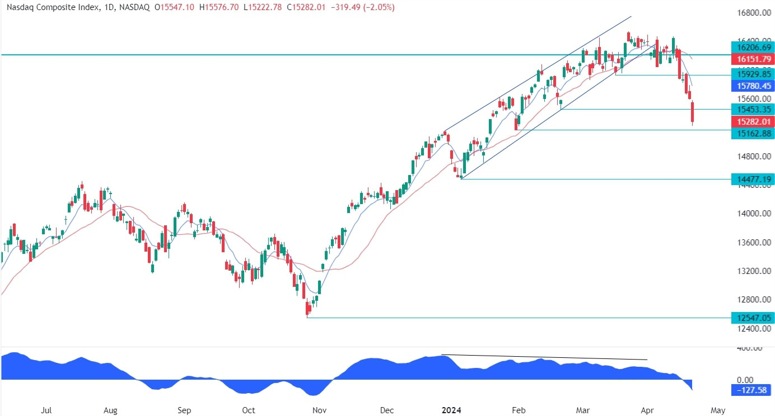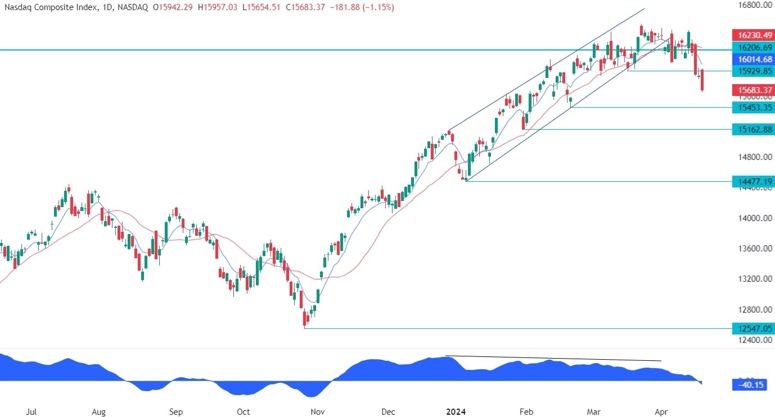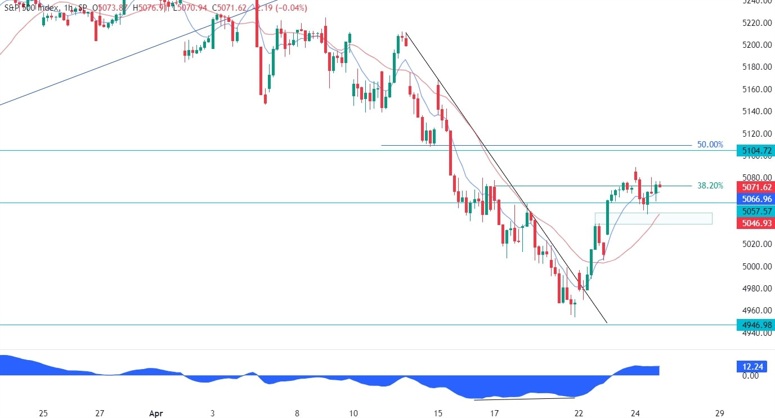IDX Composite
Parent Index
NA
Indices informations
Listed Exchanges
Related Instuments
Sector Represented
Indices
- BSE SENSEX
- CAC 40
- CBOE NASDAQ-100 Volatility Index (VXN)
- CBOE Volatility Index (VIX)
- China50-FTSE China A50 Index
- DAX
- DAX PERFORMANCE-INDEX-GDAXI
- DE40-Germany 40 Index DAX
- Dollar Index USDX-DXY-DX-Dixie
- Dow Jones Industrial Average-DJIA
- EURO STOXX 50 SX5E
- FTSE 100 Index-UK100 Index
- Germany 30
- Hang Seng Index
- IBEX 35-Spain 35
- NASDAQ Composite
- NASDAQ-100
- Nikkei 225
- Russell 2000 Index
- S&P/ASX 200
- Singapore Blue Chip Index-STI
- Swiss Market Index (SMI) Switzerland Blue Chip Index
- TecDax Price Index
- TECHDE30-Germany Tech 30 Index
- US Tech 100 Index UT100
- US2000-US Small Cap 2000 Index
- US30-US Wall Street 30 Index
- US30M- US Wall Street 30 Index M
- US500-S&P 500 (GSPC, INX, SPX)
- US500-US SPX 500 Index
- US500M-S&P 500 Mini
- All Ordinaries
- Amsterdam Exchange Index AEX index
- ATX-Austrian Traded Index (ATX)
- BEL 20
- BELEX15
- BIRS
- BIST-Borsa Istanbul
- CROBEX
- EGX 30 Index Egypts Leading Stock Market Index
- FTSE All-Share Index
- FTSE Bursa Malaysia Index-KLCI Index
- FTSE MIB-FTSE MIB 40
- Índice Bursátil Caracas (IBC)
- Índice Bursátil de Capitalización-The General Index
- Indice de Precios y Cotizaciones
- KOSPI
- KSE 100 Index
- MDAX
- MERVAL
- MICEX-The MOEX Russia Index
- OBX Index
- OMX Copenhagen 20 (OMXC20)
- OMX Helsinki 25 (OMXH25)
- OMX Stockholm 30 (OMXS30)
- PSE Index (PSEi)
- PSI20-PSI-20
- S&P/NZX 50 Index
- S&P/TSX 60
- S&P/TSX Composite Index
- S&P/TSX Venture Composite Index
- SOFIX
- SSE Composite Index (上证综指) Shanghai Composite Index
- Straits Times Index (STI)
- SZSE Component Index (深证成指)
- TA-125 Tel Aviv 125 Index
- Taiwan Capitalization Weighted Stock Index (TAIEX)
- The Indice de Precio Selectivo de Acciones- IPC
- CBOE NASDAQ-100 BuyWrite Index (BXN)
- Hang Seng China H-Financials Index
- IBOVESPA-The Bovespa Index-Brazil Stock Exchange Index
- NASDAQ Financial-100
- SDAX – Small cap
- TecDAX
- aaa
- Amex Gold BUGS Index
- Amex Oil Index
- AScX index – Small cap
- ASE Weighted Index
- Athex 20
- Barrons 400 Index
- BELEXline
- BET-10
- BSE DCI
- BSE FCI
- BUMIX – Mid cap
- BUX – Large cap
- CA60-Canada 60 Index
- CAC All Share
- CAC All-Tradable
- CAC Large 60
- CAC Mid & Small
- CAC Mid 60
- CAC Next 20
- CAC Small
- Capital Markets Index
- CASPI
- CBOE DJIA BuyWrite Index (BXD)
- CBOE S&P 500 BuyWrite Index (BXM)
- CBV Index
- CBV Real Estate Index
- CECEEUR
- Central European Blue Chip Index – Regional large cap
- ChinaH-Hong Kong China H-shares Index
- COLCAP
- Colombo Stock Exchange Sector indices (CSE Sectors)
- CROBIS
- CSC X
- CSE 30
- CSE50
- CSI
- CSI 100 Index (中证100指数)
- CSI 300 Index (沪深300指数)
- Dow Jones Global Titans 50
- Dow Jones Transportation Average
- Dow Jones Utility Average
- DSE
- DSEX
- DSM200
- EGX 100 Index
- EGX 50 Index
- EGX 70 Index
- ERS10
- FIRS
- FT 30 Index
- FTSE 350 Index
- FTSE AIM All-Share Index
- FTSE AIM UK 50 Index
- FTSE All-World index series
- FTSE Fledgling Index
- FTSE Italia Mid Cap
- FTSE MID 250 Index
- FTSE SmallCap Index
- FTSE techMark Index
- FTSE/Athex Large Cap
- FTSE/JSE All Share Index
- FTSE/JSE Top 40 Index
- FTSEurofirst 300 Index
- FTSEurofirst Euro Supersector Indices
- GSE All-Share Index
- Hang Seng China Enterprises Index
- Hang Seng China-Affiliated Corporations Index
- HK50
- IDX Composite
- IGBC
- IPSA
- ISEQ 20-The Ireland Overall Stock Exchange Index-ISEQ20
- IT40-Italy 40 Index
- Jakarta Islamic Index (JII)
- Jamaica Stock Exchange (JSE)
- KASE
- KMI 30 Index
- KOSDAQ
- KSE All Share Index
- KSE-30 Index
- Kuala Lumpur Composite Index
- LASI
- LQ-45
- LuxX Index – Luxembourg Stock Exchange
- MADEX index
- Madrid Stock Exchange General Index
- MASI index
- MESDAQ
- MIDDE50-Germany Mid 50 Index
- MIDDE60-Germany Mid 60 Index
- Milanka Price Index (MPI)
- MSCI EAFE
- MSCI GCC
- MSCI Hong Kong Index
- MSCI World
- MSM-30
- NEPSE Index – Nepal Stock Exchange
- NETH25
- NIFTY 100 LOW VOLATILITY 30
- NIFTY 200
- NIFTY ALPHA 50
- NIFTY BANK
- NIFTY CPSE
- NIFTY ENERGY
- NIFTY FINANCE
- NIFTY FMCG
- NIFTY INDIA CONSUMPTION
- NIFTY INFRA
- NIFTY IT
- NIFTY MEDIA
- NIFTY METAL
- NIFTY MIDCAP 100
- NIFTY MIDCAP 50
- NIFTY MIDCAP LIQUID 15
- NIFTY MIDSMALLCAP 400
- NIFTY MNC
- NIFTY Next 50
- NIFTY PHARMA
- NIFTY PSE
- NIFTY PSU BANK
- NIFTY PVT BANK
- NIFTY REALTY
- NIFTY SERV SECTOR
- NIFTY SMALLCAP 100
- NIFTY SMALLCAP 250
- NIFTY SMALLCAP 50
- NIFTY100 EQUAL WEIGHT
- NIFTY100 LIQUID 15
- NIFTY200 QUALITY 30
- NIFTY50 EQUAL WEIGHT
- Nor25-Norway 25 Index
- NSE 30 Index
- NSE All Share Index
- NSE NIFTY 50
- NYSC Arca Major Market Index
- NYSE American Composite Index
- OMX Iceland 15 (discontinued)
- OMX Iceland 6
- OMX Stockholm PI (OMXSPI)
- OMX Vilnius (OMXV)
- OTCM QX ADR 30 Index
- Palisades Water Index (ZWI)
- PFTS index
- Philadelphia Gold and Silver Index
- PHLX Semiconductor Sector
- PSE All Shares Index
- PSE Financials Index
- PSE Mining and Oil Index
- PSI/GERAL
- PX Index
- RTS Index (RTSI)
- Russell 1000
- Russell 2500
- Russell 3000
- Russell MidCap
- Russell Small Cap Completeness
- S&P 100
- S&P 1500
- S&P Asia 50
- S&P BSE 500
- S&P Europe 350
- S&P Global 100
- S&P Global 1200
- S&P Latin America 40
- S&P MidCap 400
- S&P MidCap 400/BARRA Growth
- S&P MidCap 400/BARRA Value
- S&P SmallCap 600
- S&P SmallCap 600/BARRA Growth
- S&P SmallCap 600/BARRA Value
- S&P Vietnam 10 Index
- S&P/ASX 20
- S&P/ASX 300
- S&P/ASX 50
- SA40-South Africa 40 Index
- SBF 120
- SE30-Sweden 30 Index
- SET Index
- SET100 Index
- SET50 Index
- Slovak Share Index
- SMI Expanded
- SMI MID
- SPBLPGPT
- SSE 180 Index (上证180指数)
- SSE 50 Index (上证50指数)
- STOXX Europe 600
- SWI20-Switzerland 20 Index
- Swiss Leader Index (SLI)
- Swiss Performance Index (SPI)
- SZSE 100 Index (深证100指数)
- SZSE 200 Index (深证200指数)
- SZSE 300 Index (深证300指数)
- TA-35 Index
- TA-90
- Tadawul
- TEDPIX
- TEPIX
- The Global Dow
- The GSE Composite Index.
- THETAUSD Theta Network Token vs US Dollar
- TOPIX
- Trinidad and Tobago Stock Exchange (TTSE)
- UBS 100 Index
- Value Line Composite Index
- VN Index
- WIG-Warszawski Indeks Giełdowy
- WIG30
- Wilshire 4500
- Wilshire 5000
- Zimbabwe Industrial Index
- Zimbabwe Mining Index
The IDX Composite Index, also known as the Jakarta Composite Index (JCI), is a stock market index that represents the performance of the Indonesian stock exchange. It consists of all listed companies on the Indonesia Stock Exchange (IDX) and serves as a benchmark for investors and analysts to gauge the overall health and direction of Indonesia’s economy.
With its inception in 1982, the IDX Composite Index has grown to become one of the most influential and important indices in Southeast Asia. It showcases the performance of various sectors including finance, mining, consumer goods, infrastructure, telecommunications, and more. Many local and international investors rely on this index to assess the investment potential and stability of the Indonesian market.
The IDX Composite Index is calculated using the free float market capitalization method, which means that it takes into account only the shares available for public trading. This methodology ensures that the index accurately reflects the movements and trends of actively traded stocks, providing a realistic representation of the market conditions.
As an emerging economy with a large population and abundant natural resources, Indonesia offers immense growth opportunities for investors. The IDX Composite Index acts as a barometer for tracking the performance of key players in the Indonesian market, helping investors identify potential areas for investment and diversification.
Over the years, the IDX Composite Index has witnessed both highs and lows, influenced by various internal and external factors. Political stability, economic policies, global economic conditions, commodity prices, and currency fluctuations are some of the factors that impact the performance of the index. Investors closely monitor these factors to make informed decisions and manage their portfolios effectively.
For the Indonesian government, the IDX Composite Index plays a crucial role in attracting foreign investments. A positive performance of the index indicates confidence in Indonesia’s economic prospects, making it an attractive destination for foreign capital. This, in turn, promotes economic growth, job creation, and overall development of the country.
Investing in the IDX Composite Index can be done through various financial instruments such as index funds, exchange-traded funds (ETFs), or derivatives. These investment vehicles allow individuals and institutions to gain exposure to a diversified portfolio of stocks that make up the index, reducing risk and providing opportunities for long-term capital appreciation.
In conclusion, the IDX Composite Index serves as an important indicator of Indonesia’s economic health and performance. It provides valuable insights into the overall market sentiment, attracting both local and international investors. As Indonesia continues to strive for economic growth and stability, the IDX Composite Index will remain a key tool for evaluating investment opportunities in this vibrant Southeast Asian market.
Understanding IDX Composite Key Data Points
The IDX Composite is a stock market index that tracks the performance of all stocks listed on the Indonesia Stock Exchange (IDX). It is widely used as a benchmark to measure the overall market sentiment and performance in Indonesia. The IDX Composite key data points provide valuable insights into the dynamics and trends of the Indonesian stock market.
1. Index Value:
The index value represents the aggregated value of all stocks listed on the IDX. It is calculated using a weighted average market capitalization methodology, where the larger companies have a higher impact on the index value. The index value is updated in real-time throughout the trading day and provides an indication of the overall market movement.
2. Market Capitalization:
Market capitalization refers to the total value of a company’s outstanding shares in the market. It is one of the key factors that determine a company’s weightage in the IDX Composite. Companies with higher market capitalizations have a greater influence on the index performance. Monitoring changes in market capitalization can help investors identify trends in specific sectors or industries.
3. Sectoral Performance:
The IDX Composite is composed of various sectors, such as finance, consumer goods, healthcare, technology, and more. Analyzing sectoral performance data can provide insights into the relative strength or weakness of specific industries within the Indonesian market. This information can be useful for investors looking to diversify their portfolios or capitalize on emerging opportunities.
4. Trading Volume:
The trading volume indicates the number of shares traded on the IDX Composite within a specific time period. Higher trading volumes often indicate increased market activity and liquidity. Monitoring trading volumes can help investors gauge market interest in specific stocks or sectors and identify potential buying or selling opportunities.
5. Daily Price Changes:
The daily price changes of individual stocks listed on the IDX Composite are crucial data points for investors. It reflects the percentage change in a stock’s price from the previous trading day’s closing price. Tracking daily price changes can help investors spot trends, identify potential entry or exit points, and assess overall market sentiment.
6. Dividend Yields:
Dividend yield is a financial ratio that represents the dividend income generated by a company’s stock relative to its current share price. It is an important indicator for income-focused investors. Monitoring dividend yields of companies listed on the IDX Composite can provide insights into their payout policies and potential returns on investment.
Overall, the key data points provided by the IDX Composite offer valuable information for investors and market participants to make informed decisions. By analyzing these data points, investors can gain a better understanding of the Indonesian stock market landscape and identify potential investment opportunities.
Fundamental Summary
- Coming soon!!

